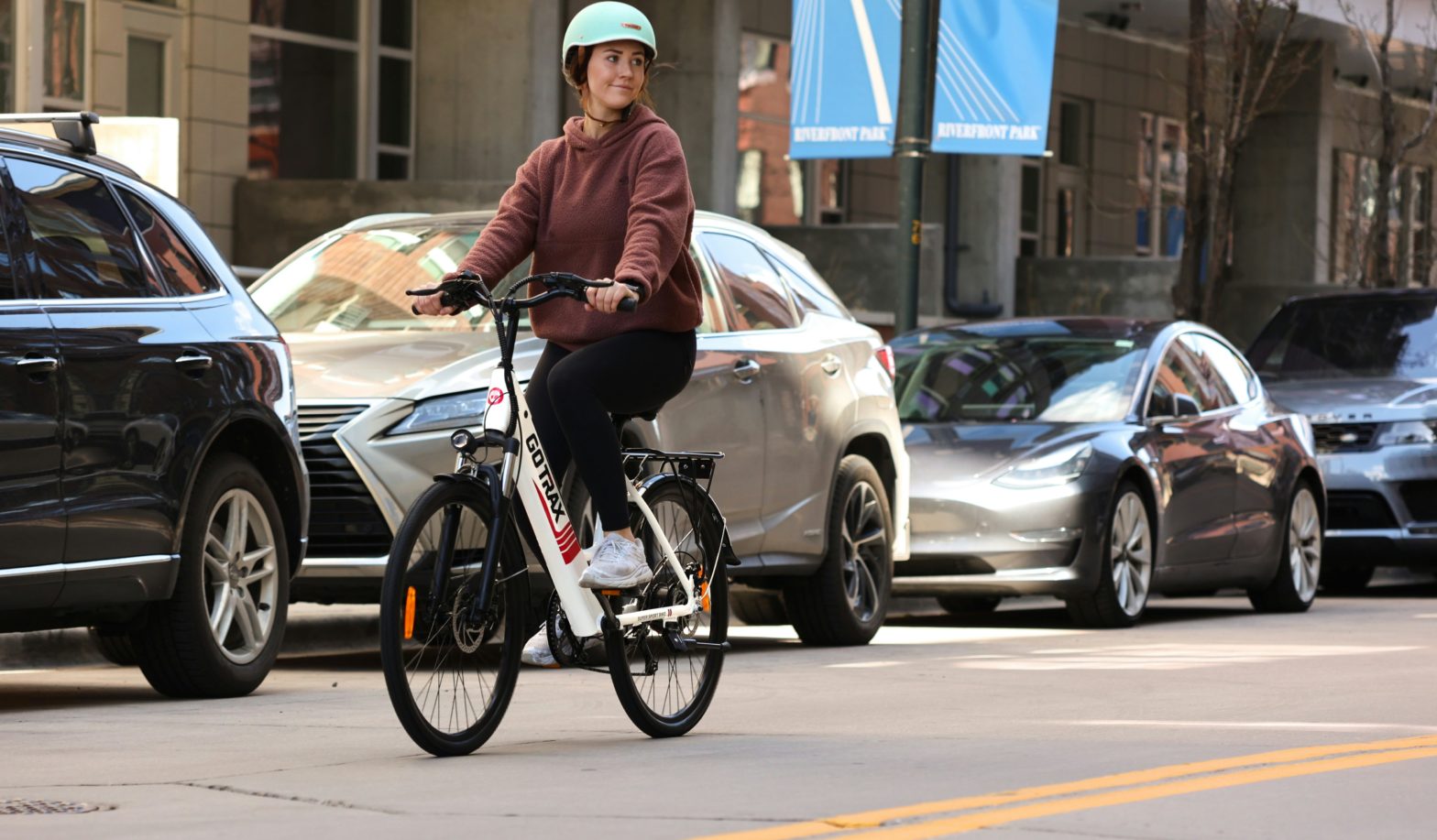
Photo: Rikesh+Shah+03142019_UF_RikeshShah_15
European cities are using data to make roads safer and smarter
29 March 2022
by Christopher Carey
Christopher Carey rounds up the key talking points from a recent Cities Today City Leadership Forum event attended by transport decision-makers from across Europe.
As cities bounce back from COVID-19 and traffic returns, transport leaders are looking to incorporate new tools to improve the safety and efficiency of services.
In the UK, Transport for London (TfL) has teamed up with Mercedes-Benz AG to develop a road safety dashboard that has the potential to identify higher risk locations before accidents happen.
The project is part of the city’s Vision Zero strategy, which aims to have no fatalities or serious injuries involving road traffic.
While data related to accidents that have occurred is readily available to most city authorities, information on near misses has to date been sparse.
Risk profiling
Rikesh Shah, Head of Open Innovation, Transport for London, said: “Our focus is very much around risk profiling.
“There’s data coming out of cars that’s helping us to understand near misses – that could be through braking, swerving and other types of incidents.
“An average new car has over 100 sensors and through our work with Mercedes-Benz, we can get data from cars and aggregate it into our risk model, and as a result we can put the right interventions in place that will help us achieve our aim of Vision Zero.”
With 38 percent of traffic fatalities in Europe occurring inside urban areas, this type of technology is becoming increasingly important.
Through the partnership with Mercedes-Benz, TfL uses heatmaps that identify danger zones to allow the transit operator to be more proactive. Potential collision spots are automatically identified by individual alerts at the exact GPS location and are immediately analysed using an algorithm developed by the car-maker’s engineers.
“For us, data protection has top priority,” said Matthias Mallik, Manager, Business Strategy & Data Solutions, Mercedes-Benz AG.
“Only if the driver has given [their] consent to the processing of driver assistance data via the ‘Mercedes me’ app will these warnings or autonomous braking interventions be sent from the vehicle to the Mercedes-Benz Cloud, and processed there in an anonymised form.”
The vehicle data from the car’s driver assistance system is enriched with additional data from TfL. This includes data from existing traffic infrastructure such as traffic lights and pedestrian crossings, and information on collisions that have already occurred, as well as vehicle, cyclist, and pedestrian density.
As the focus is primarily on the most vulnerable road users – pedestrians and cyclists – risky situations in zones around schools, nurseries and universities have been prioritised in London.
“The initial discussions [with Mercedes-Benz] started over 18 months ago – it was a conversation about what the problems were, rather than focusing on the solutions,” added Shah.
“So together we experimented and brought together different experts from both the city and the company. The partnership is now at a stage where the data is really adding value.”
EV transition
London has accelerated its transition to electric vehicles (EVs) in recent years – and now has a quarter of all public chargers in the UK.
As well as supporting over three billion rides on public transport in the UK capital since its launch in 2014, financial services firm Visa is now looking at how it can remove the pain points for customers using EV charging services – which currently often involves drivers having to download a plethora of apps from different firms to pay for a service.
Richard Campion, Head of Acceptance at Visa, said: “The transition to electric vehicles is dependent on a simple, effective infrastructure to support it.
“Visa has launched a consultation among leading infrastructure players across Europe’s electric vehicle ecosystem to establish the barriers to installing contactless payment points and identify robust solutions.
“We’re in the process of conducting one-to-one meetings with a core group and running an online survey with a wider range of providers – including companies in infrastructure, strategy, investment and finance, fleets, leasing and technology and innovation.”
The affordability of even the most basic models of EVs is a barrier to widescale adoption however, and rising energy costs and a lack of adequate charging outside major cities also pose problems.
Christopher Hook, Head of Sustainability Strategy, Uber, said: “I think the biggest challenge for drivers is certainly the cost.
“We’re using our scale and partnerships with car manufacturers, like Nissan, Kia, Hyundai, Tesla and others, to try and ensure vehicles are available to drivers as cheaply as possible.
“We’re also helping drivers to raise some of the capital they might need.
“In Berlin, Madrid and some other cities, [Uber] drivers pay a lower service fee on trips if they use an electric vehicle.”
Intelligent transport systems
In Hamburg, Germany, the development of Intelligent Transport Systems (ITS), such as an autonomous EV programme and smartphone-based ticketing with automatic fare calculations, has been instrumental in the development of the city’s ecosystem.
Hamburg hosted the ITS World Congress in October 2021, showcasing the latest developments in the field as well as its own achievements.
Its Check-In/Be-Out pilot – commissioned by the transit authorities HVV, HOCHBAHN, S-Bahn, DB Regio, Metronom, VHH and KVG Stade – is currently working towards the realisation of smartphone-based ticketing with automatic fare calculation for services.
Martin Huber, Head of Transport, City of Hamburg, said: “I think our ITS strategy, which we established in 2015, has paid off.
“The most important thing has been the shift in mindset with all our people – in administration, science and politics – because everybody understands that ITS is a crucial development and we have to be at the front of the movement looking towards the future.”
E-scooters
Cities have embraced active travel and new modes of transport like e-scooters to facilitate social distancing and prevent people reverting to their cars – but concerns over safety and the role that the micromobility devices can play have been hot topics.
“Micromobility providers must leverage both technology and operational excellence to reduce safety issues,” said Maxim Romain, COO & Co-Founder, Dott.
“On the technological side, we can limit accidents by adjusting speed limits according to zones, from 0-25 kilometres per hour.
“We can also ensure parking compliance through geolocation technologies, and make sure that our e-scooters are always in good condition by remotely receiving health information about each unit and triggering maintenance tasks in case of defect.”
The use of privately owned e-scooters on public roads and paths is currently forbidden in the UK, with a series of city-mandated trial schemes being the only legal way to use the micromobility devices.
“E-scooters are pollution free, noise free, they occupy little space and they are very efficient vehicles to move in a city, if we can in addition show that they are as safe as bikes then we will make it easy for lawmakers to make them an integral part of the UK’s transit ecosystem,” Romain said.
Image: Greywolf











